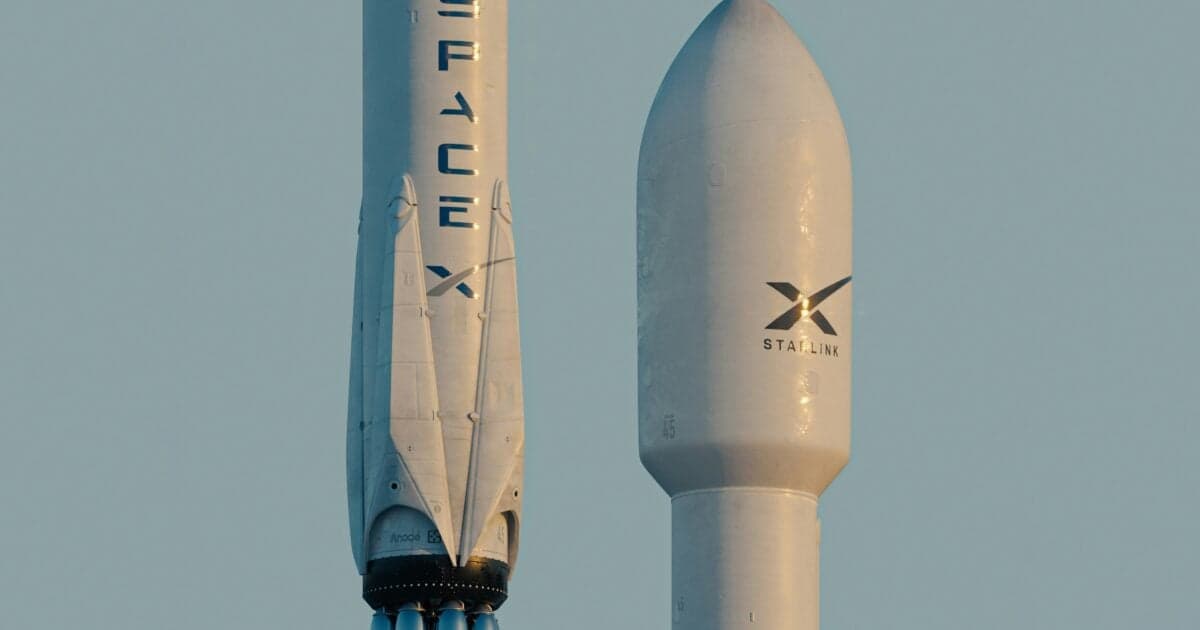This 2019 Cover Story on Eric Wade and Bitcoin Was Prescient... What Is He Saying Now?


Below is a cover story on entrepreneur and crypto expert Eric Wade from the American Consequences magazine, read by more than 500,000 Americans at its peak.
Originally published in November 2019 when bitcoin was under $10,000, you can see how long Eric has been focused on helping investors like you discover the opportunity... and dangers... in crypto and technology.
Read on for a look back at his past predictions... and think about what it may mean for the latest big opportunity he's focused on for investors, detailed here.
On Being First, Again and Again
If you missed buying bitcoin for $0.05... you could get a second chance
Eric Wade is waiting at the Las Vegas resort when I arrive – sitting at a table with his wife of 28 years, Ana Montoya-Wade.
He's shorter than you might expect from his appearances on stage and television. But his salt-and-pepper hair, one strand escaping over his eye, combines with an unbuttoned white shirt and a light jacket to give him a rakish look.
He confides later that he cuts his own hair. He has a twin brother... who he shot. He's written a dozen feature movie scripts and even sold one to Adam Sandler. He spent years at Merrill Lynch and held Series 3, 6, 7, 63, and 65 licenses, ran an advertising firm in Laguna Beach, and owned a live music venue in the shadow of Paramount Studios.
Wade was in Vegas at an investment conference to give his perspective as an early bitcoin pioneer... and to share what's next for it and other cryptocurrencies.
But as we talked, it became clear that his enthusiasm for bitcoin was only his latest adventure in a long, long line of firsts...
Million-Dollar Nickname
Wade's first brush with fame was in the mid-1990s.
At the time, he was a financial manager with Merrill Lynch, the largest retail brokerage in America. Despite calling Albuquerque, New Mexico, home, he went by the nickname "Wall Street" – and with the advent of the Internet, he needed a good e-mail address. So he and a friend plunked down $7 to register the domain wallstreet.com...
"Sometimes when you see a good opportunity, you don't buy it having fully recognized all of the values it will eventually turn into, right? At the time that we bought wallstreet.com, it was solving a problem – I needed a good e-mail address. And I immediately went from this horrible AOL address to eric@wallstreet.com."
But like cryptocurrency, being early was an incredible opportunity. "We started getting e-mails, people saying, 'Hey, I'll buy that from you.' And the value of it just mushroomed after that."
In 1999, Wade became the first seller of a domain name for more than $1 million.
He received press ranging from the Wall Street Journal, Wired, and PC Magazine. His prediction at the time in the Washington Post looks prescient now... "This is only the beginning," he said. "These dot-com names are the Rodeo Drive and Fifth Avenue addresses of our industry. Once they are gone, they can't be replaced."
The book The Domain Game: How People Get Rich From Internet Domain Names put it this way:
[WallStreet.com] was an ideal name for many different businesses, from an investment bank to a financial news outlet. And it drew a lot of traffic. "Between 4,000 and 17,000 people a day would just type 'Wall Street' into their browser," Wade said. "We called it background noise. People were just typing it in to see what would happen." Wade's wife, Ana Montoya-Wade, likened the domain to the "most prime beachfront property on the Internet."
As Wade points out, though, "The only way we got $1 million for wallstreet.com is we said no to $60,000, we said no to $250,000, we said no to $500,0000. And then, at $1 million you say, 'OK, that's it – we'll take it.'"
Of course, not every early venture is a success...
The Only Plane in the Sky
It was September 13, 2001. A plume of gray smoke and dust still rose from the Twin Towers. And Wade was flying in the only plane in the sky.
All other civilian air traffic in the U.S. had been grounded – a precaution against further terrorist hijacking – but the Federal Aviation Administration had authorized this one flight from Albuquerque to New York. On board was a rescue team who hoped that they could help find bodies underneath the World Trade Center rubble.
Wade was a former stockbroker, an investor, and entrepreneur. He didn't have rescue experience. But some months prior to the September 11 tragedy, a filmmaker friend had reached out about a documentary about rescuing people after disasters hit. And in late August, a group attached to the documentary approached Wade with a new machine that could help find bodies.
The timing seemed serendipitous. As Wade said, "9/11 hit – within a few days of looking at the investment. And so they said, 'We're going to Ground Zero with this box, to see whether we could help there.'"
The invention was meant to be a "dog in a box" of sorts... replacing a dog's incredible sense of smell in a package that could be quickly shipped in quantity to disasters around the world – like rural India or Asia – where it would be difficult to get trained dogs.
But soon, they realized the box couldn't hit the level of accuracy from a dog. "The minute you realize that, there's nothing that we can do here. Let me just get a shovel or something – help any way I can," says Wade.
"We were shoulder-to-shoulder with the crews who were trying to dig stuff out – but there was also so much death all around," Wade says. "And you're looking at the firemen that risked their lives, the police, and the nurses... And in some respect, there was almost nobody to help. And then you leave the site and there are throngs of New Yorkers who are aching for something to appreciate. And they're appreciating you for being there, and you're like 'I didn't help,' right? 'I'm here, I'm trying to help, but I didn't help.'"
"He was different when he got back," his wife says.
Wade nods. "It was this event in your development where you're thinking 'this is the solution'... and then it's not. It was overwhelming," says Wade. "It's still very emotional for me. It's heartbreaking."
Too Early for Billions
Failure is part of being first, explains Wade.
Sometimes, the big wins only come because you say no to small wins along the way – like with the $1 million sale of wallstreet.com. Other times, being "early" isn't enough, and a latecomer ends up with the gains.
In the dot-com heyday, Wade helped found a startup with a promising future. It was an early pioneer in Voice over Internet Protocol ("VoIP") chat... the technology that today powers Skype, Google Talk, and the iPhone's FaceTime.
His wife gives him a hard time about its name... "Really Easy Internet."
"Intuitively, it sounded like it was a good solution... Let's make something that's hard, easy. But that wasn't a selling point enough to overcome that the market wasn't ready for it," says Wade. The group raised $2.5 million in venture capital but shut down in 2001 when the dot-com boom turned into the dot-com bust.
"The saddest part was that what we had invented was something that was just too early. It was a voice over Internet. And eventually it became something like Skype, but we were too early, when nobody cared."
Skype was founded a few years later. It ultimately sold to Microsoft in 2011 for $8.5 billion.
That's around when Wade was discovering his next major opportunity, at a stage when almost no one could have guessed just how big it would get...
Every Transaction Ever
In January 2009, the Bitcoin network got its start when Satoshi Nakamoto created the first "genesis block." Today, there are just over 18 million bitcoins in circulation... all of them initially mined by individuals and companies... and most of them mined by those who realized the opportunity early, like Wade.
"I grew up surrounded by the secrecy of a national nuclear weapons lab in Los Alamos, New Mexico. I liked cryptography and private-key/public-key encryption for a long time, so I may have stumbled backward onto bitcoin," Wade says. "My first feel of it was, 'This is challenging. This is really hard.' There wasn't any way to double-click the logo and it'll install itself or something like that. You had to build it yourself."
A Wired story titled "The Rise and Fall of Bitcoin" in November 2011 seemed to put the nail in the bitcoin coffin before it had even begun. The price of bitcoin had only reached parity with the U.S. dollar earlier that year. But still, there was a note of hope...
"You could say it's following Gartner's Hype Cycle," London-based core developer Amir Taaki says, referring to a theoretical technology-adoption-and-maturation curve that begins with a "technology trigger," ascends to a "peak of inflated expectations," collapses into a "trough of disillusionment," and then climbs a "slope of enlightenment" until reaching a "plateau of productivity." By this theory, bitcoin is clambering out of the trough, as people learn to value the infallible code and discard the human drama and wild fluctuations that surround it.
The earliest miners could receive 50 bitcoins for each block they mined. That was halved in 2012... and halved again in 2016. Mining is essentially a way of using computing power to lock down bitcoin transactions, with a reward of a chance at receiving a "block" in the chain.
"I remember the first time I downloaded the blockchain. It took hours. And now it takes days, because it's so big. And I remember looking at it and thinking, 'What the hell have I gotten myself into?'"
Wade declines to say how much bitcoin he mined, but in 2011 to 2012, it was possible to mine 100 to 250 bitcoins in a few days with a regular home personal computer... worth between $75,000 and $200,000 today.
But the monetary reward was at a secondary level. "You have that eye-opening moment of, 'Wait a minute, I'm downloading every transaction ever.' That's the value of the blockchain," says Wade. "I think that's probably why some of the early adopters of this just have it in their DNA now. It's because we had to go through that learning stage of why it's important that it's built that way."
As Don and Alex Tapscott put it in their book, Blockchain Revolution: How the Technology Behind Bitcoin Is Changing Money, Business, and the World...
Imagine a technology that could preserve our freedom to choose for ourselves and our families, to express these choices in the world, and to control our own destiny, no matter where we lived or were born. What new tools and new jobs could we create with those capabilities? What new business and services? How should we think about the opportunities? The answers were right in front of us, compliments of Satoshi Nakamoto.
What's Next for Crypto?
Wade is watching three macro waves for cryptocurrency...
1. The first wave is simply overcoming new difficulties in buying and selling tokens. Many exchanges are now limiting the ability of Americans to access them, thanks to new federal regulations. Wade wrote us a "Crypto Dark Age" article in the August issue of American Consequences...
Exchanges must now balance two opposing forces: the need to make money and attract customers, and the need to avoid regulatory trouble with the SEC. It’s a balance between risk and reward.
Playing it safe by only listing a handful of cryptos makes it hard to attract new customers. But listing a questionable crypto – and attracting new customers – could get an exchange in trouble with the SEC. So many popular exchanges are choosing to limit the cryptos they offer.
However, the good news here is that bitcoin will likely be king... It's the oldest and original cryptocurrency. And it's not in jeopardy of being removed from exchanges.
"Bitcoin, you should think of it as buy and hold forever. There may be some macro times that you can take advantage of price irrationalities," says Wade. "You still have to have the common sense. If I woke up tomorrow and bitcoin was $1, that's irrationally low, and I would buy the daylights out of it. And likewise, if I woke up tomorrow and it went from $8,000 to $100,000, I would say that's irrationally high. I'd sell at least a piece of it, and then try to buy it back later."
2. Next, the crypto world needs better products – social media, storing things, or tokenizing real-world assets. Think about fairly mundane activities – like streamlining transactions, improving databases, or keeping records. Or it could be something irresistible... an app or a service that's right around the corner.
Wade likes to "own technology that companies who don't want to build their own technology will need" – comparing them to owning the railroads, steel mills, and refineries as the U.S. was industrializing.
3. And finally, the third wave is broad adoption. That's when real participants realize that a crypto token solves a real problem that they have – like the wallstreet.com domain did for Wade as an e-mail address. And, of course, ended up being worth $1 million.
So could we ultimately see a single bitcoin valued at $1 million?
We're All Time Travelers
If you're an average American looking to save for retirement, you have to protect your savings for upward of 50 years.
But the U.S. dollar has lost 95% of its value since 1913. And it's lost 60% of its value since 1984. Money creation since 2008 alone, Wade says, makes the parabolic move of the prior several decades look insignificant.
On the other hand, bitcoin had no value for the first year and a half of its existence. Since then, its price has gone "up and to the right"... with some ups and downs along the way.
And because of the way it's built, bitcoin is guaranteed to have low inflation – only a small percentage of coins can continue to be mined as time goes on.
"Cryptocurrencies are 'retraining our brains,'" says Wade. "It's showing that saving beats spending... and it's detaching money from government control."
Wade mentions that he recently wrote a movie script about time travel... and how the travelers can plan for an unknown future for what money will be worth.
"It's now being read by the producers of Designated Survivor, the producer of Vampire Diaries and Justin Lin's production company (director of Fast & Furious). The point being that cryptocurrencies are designed to outlast every other kind of money."
After all, in the long view, an unlimited supply of inflationary dollars will be chasing a limited supply of bitcoin. And Wade expects that bitcoin will outlast every other government-printed currency.
So a $1 million price level for bitcoin isn't just possible... it's inevitable, according to Wade.
And if he's right, it would only be one of many "firsts" that he's been at the forefront.
How to Get 'Hilariously Rich'
For a while, it seemed easy to get ridiculously, outrageously wealthy with cryptocurrency. The New York Times published an article in January 2018 titled, "Everyone Is Getting Hilariously Rich and You're Not."
The wealth is intoxicating news, feverish because it seems so random. Investors trying to grok the landscape compare it to the dot-com bubble of the late 1990s, when valuations soared and it was hard to separate the Amazons and Googles from the Pets.coms and eToys.
Of course, the 2017 to 2018 extremes didn't last. But as the Times pointed out... amid the dot-com bubble fever and insane valuations were also some of the most innovative businesses in the world – that are now some of today's most valuable companies.
Is that true for bitcoin, cryptocurrencies, and the underlying blockchain technology today?
Wade says absolutely. "Volatility's high. The market's going to have to pass $1 trillion in market cap – and right now it's around $200 billion – before the volatility gets lower... That's when people will start thinking of it as growing into its next phase."
Today there are about 5,000 cryptos out there, according to Wade. He likes "maybe about 30 of them." He's recommended a few dozen to his readers – and his top gain this year is a 1,320% closed trade... despite a lackluster market for cryptos in general.
So while he sees big opportunity... there is also risk for folks who don't understand the market.
To help fix that, Wade ends our conversation with a tease for his next big venture...



